Many SLPs feel uncertain and uncomfortable when it comes to AAC. I’ve brought my friend Susan Berkowitz on the show to talk about AAC. She’s got so much knowledge on this topic and in this episode we discussed:
- AAC and autism
- AAC myths
- practical AAC tips
- communication temptations
- using 2-word phrases
- Susan’s new book
I hope that you enjoyed listening to today’s show. Don’t forget to check the links and resources section below to check out all of the resources we discussed in today’s episode.
Links and Resources:
- The Digital SLP Membership
- Susan’s Core Vocab Kit
- Susan’s Book – Make the Connection
- Susan’s TpT Store
- Susan’s Website
Full Transcript of Podcast: AAC 101
Episode 44: AAC 101
Jessica: You're listening to the Speech Space Podcast, a podcast full of tips and resources for SLPs. I'm your host, Jessica Cassity, and this is Episode 44. Hi everyone! Today, we're going to be talking about using AAC in children with autism with special guest, Susan Berkowitz. Before we get started, I wanted to take a brief moment to let you know that this podcast is brought to you by The Digital SLP membership site, which is a site that features time-saving no print and low prep resources for SLPs. On January 15, 2019, I plan to choose one lucky podcast reviewer to win a free year of access to The Digital SLP membership. So hop on over to iTunes and leave a review for the show and tune in on January 15th to see if you were the lucky winner. If you'd like to learn more about the membership, please head on over to thedigitalslp.com/digitalslp. Like I mentioned today, we're going to be talking about using AAC in students with autism. And before I bring special guest, Susan Berkowitz, on the show, I did want to let you know a little bit about her. She's been an SLP for more than 40 years during which time she's concentrated predominantly on AAC, except for eight years where she was working in a school district with significantly language learning disabled students in grades K through eighth. She has worked for more than 45 years with students with autism. Susan has an extensive background in psychology, special education, speech pathology and audiology, school administration, and applied behavior analysis. She has worked as a practitioner, supervisor, director of communication department, and director of education. Susan's clinical expertise has included public and nonpublic schools, nonprofit community agencies, residential settings, and her own private practice. She's been published in peer-reviewed professional journals and presented at national and international conferences. She has recently completed a book called Making the Connection, providing how to advice for parents and SLPs new to AAC. Susan also owns Language Learning Apps LLC, and is the developer of QuestionIt and SoundSwaps apps for the iPad. She also creates and sells adapted special education and AAC curricular materials on her website, which I will link to in the show notes of this episode. All right, let's go ahead and bring Susan on the show. Hi Susan, thank you so much for joining us today to talk about using AAC in children with autism.
Susan: Thank you for having me, Jessica. I'm glad to be here.
Jessica: Great. Could you tell our listeners a little bit about your experience as an SLP and, specifically, in regards to AAC?
Susan: Okay. Well, I started working with kids with autism about 45 years ago. And when I was in college and when I was looking at graduate school programs, I thought about... I was looking for something with a specialty in autism, which there weren't very many of back then. And I had been teaching kids signs to communicate and I thought that was really the kind of thing that I wanted to do. So I went and got my degree in speech pathology and audiology. And that's pretty much what I've been doing ever since, mostly with kids with autism, though not entirely. And mostly with AAC though, not entirely, but it's just sort of grown from there and I've moved with the times as the field has changed quite significantly over the past 40 years. And it's been kind of fun and exciting to watch, frustrating when it felt like it wasn't growing fast enough. But there's, you know, it's still a fairly young field, but there's now a pretty consistent body of research informing our practice. And I just really love it there. The kids I love working with, and I love being able to give somebody a voice, and have them be able to communicate with the world. So I, I've been happily doing it for four decades.
Jessica: That's great. That's great. I love that. You know how you said, you're giving someone a voice because you really are when you're using AAC. And you mentioned research, I know that you wrote a nice blog post on AAC and its evidence for children with autism. Could you talk a little bit about that?
Susan: Yeah. So as I said many years ago, and when I first started working with kids with autism, it was still called childhood schizophrenia, which has changed, and there was not a lot of information out at all. Back in the 60s and 70s, we started doing some research with using signs and that's in fact, what I wrote my Master's thesis about was teaching signs to kids with autism, which seemed to be a much more efficient and effective way to teach them to communicate something than traditional speech therapy was. There was just not a lot of movement with what we were doing in speech therapy at the time. And so it was kind of exciting. When I first started working with kids once I got my degree, it was a lot of the same kind of slogging. We tried traditional therapy stuff, we taught signs. And eventually we got to a point, I was out here in California, and there was a teacher who worked for the Los Angeles County System who made some drawings and I got my hands on a copy of those. And it was using the drawings with the kids that I was working with. And it was really exciting to see them learn to point to a picture or touch a picture or hand you a picture in order to tell you what they wanted. And then of course it took quite a number of years after that for the big communication symbols to finally make their way out. And it hasn't been all that long that there has been, as I say, a body of research about using AAC with autism and different types of augmentative communication. At first I think, you know, Andrew Bondi and the folks who developed the Picture Exchange Communication System had the most research out and about, and again, they had a really good success rate with kids with autism. And what we've discovered since then, though, is that it's not the most efficient way to teach augmentative communication that should limited in vocabulary and in language development. And so we've moved on from that a lot in the last decade, I guess, my work with kids in autism and I've consulted to school districts. So I run a private practice and had an independent consulting business. And so I've seen autistic kids all over Southern California, trained teachers, and other SLPs, and staff. And it's really been exciting to see evidence-based practices getting out there more in the world and seeing kids learn not only to communicate, but also learn literacy skills in kids who for many, many years people thought that just wasn't possible and wasn't going to happen. I love that we are thinking more now that that kids with autism can communicate and not just with behaviors. They can learn to read and to communicate through the written word. And so it's really, it's always just been a fascinating field to me and I love the way that it has changed and grown. And that, again, the evidence, if you look Gayle Porter has been using her PODD books, Pragmatic Organization Dynamic Display books in Australia for 25-30 years at this point. And she's teamed up with some SLPs here in the States, and they've... with Joanne Cafiero among others. And they've done research studies showing work with kids with autism, with PODD books, and the pragmatic aspects of that having really good success with them. And I've worked with kids that I've given PODD books to and all sorts of other systems. And it's really fascinating. I'm almost sorry I'm retired. Not really, but in a way, I'm having a hard time letting go. And I still keep reading the journals, and watching webinars, and trying to keep up with the field because there is still so much happening. And we've learned a lot. I think there's so much more, obviously, since the first, you know, signs we taught to kids and in the 70s, but just about building language and not just teaching, requesting, but getting kids to come in and, you know, we get so caught up with the "I want X." And I have surely handed out my fair share of M & M's over the course of my career. But if you look at so many kids with autism, they want to say, leave me alone, go away. I don't want this. He's bothering me. I need a break. I gotta get out of here. None of those things are simple requests. They're not "I want" statements most of the time. You know, it might say, I want you to go away, but that's a longer sentence than I'm going to get out of my kids. So I love that we're starting to look a lot more carefully at the functions and the pragmatics. And what is this kid trying to say to me? And it's not just "I want cookie."
Jessica: Right, exactly. Now I know that you're a big fan of using communication temptations. What are some examples of some of those that SLPs who are listening today can use in their speech room this week?
Susan: Anything that, you know, that the child likes. Have it visible, have it available, just out of reach, and not always just out of reach, but find what is going to motivate that child. And we know that that changes frequently over time. We know kids can get satiated on something. We know that their likes and dislikes change from day to day. And so you've always got to keep up with that, you know, survey of what their reinforcers or motivators are. What they like and what they want and have those available, have them out. Then model, you know, what so... I never travel without my bottle of bubbles. And I put those out and I hold on to the blower part and, you know, when kids start reaching, I start modeling. "Bubbles?" "You want bubbles?" And then I start blowing bubbles and then I stop and I'll model more or blow more or more bubbles. And so we keep going that way. I have always traveled with a portable DVD player and a whole selection of DVDs. And so anything that, you know, that is going to tempt them, that they're going to want, and will motivate them to communicate something to you, in order to get it. Whether, you know, we try and stay away from the edibles. But as I say, bubbles, DVDs, any other toy. I have a Bert and Ernie giggle ball that has been the favorite of many of kids with autism. Even you knows it, and have those, have them out. And Barry Prizant in his communication survey has a little wind up toy in a container, and he always has that out, and when the child reaches, they have to ask for help because they can't get the lid open, and then they have to ask for help to make it wind, to walk. And then when it winds down, they have to ask again. And again, anything like that that will tempt the child to interact with you, that we all get them to imitate the communication model, and begin to have some back and forth with you. Anything will work and I've had kids for whom that's, you know, jalapeno peppers. No, I am not torturing the poor child, but, yeah. So you know your kids best.
Jessica: Okay, great. I did an episode a while back on using core words. I think that was Episode 32, but I'm wondering what advice you can give to SLPs working with students who are moving beyond using single words. You know, how do they bridge that gap?
Susan: So when we're doing that aided input, we're always doing it one step ahead of where the student is. If you've got a student who's using one word responses consistently, you want to start to model two words. When they're using two words consistently, you want to start to model three words. And so you're always pushing that envelope, that sort of zone of proximal development, one step at a time. We're still looking at core words. If you look at the 25 core words that toddlers use the most, and you start putting together two-word combinations, you've got a huge number of things that you can say. Want that, that mine, it mine, put there, get it, on and on and on. There are so many two-word combinations, three-word combinations. And you can stick with a core word communication board of 25 or 36 or 40, depending on whose system you use, and be able to communicate so much, even without a lot of fringe words. We always want to have the fringe words there, they're important to kids. And we sometimes forget those in our rush to use core words so much. But I say you're building language the same way you are with any child with minimal language. You just, you know, go from one step to the next in a developmental progression. And sure there are splinter skills and sure it's not the same typical development, but teaching language is teaching language. And I think a lot of speech pathologists who aren't familiar with augmentative communication, kind of get worried about that a little bit. And I always say, you really don't need to do much different from what you're doing with any other child who has a minimal language. You're just going to build that language. And so there's not a lot that you need to do differently or say differently, or to have different materials with, you just need to add that alternative mode of response. And so I think, you know, do it the way you do your language therapy, normally. Core words can take you many, many places. There's Gail Van Tatenhove has a wonderful handout. I don't know if it's still on her website where she has the Billy Goats, Three Billy-Goats Gruff, all done in core words as a demonstration of how you can do it, and you can take a story and you can break it down to core words and students who have nothing, but their core word boards can tell you a story. And tell it as completely as any other child with some minimal language. But so I don't think you need to distress. You're still teaching language.
Jessica: Yeah. Yeah. I think that's really important to remember, because I think sometimes, new grads or people switching into the school setting, they are intimidated when they hear AAC and they're kind of like, where, you know, where do I start? What do I do? And I think you bring up a really good point that, you know, we know, how to treat language disorders. So that's really how you do it.
Susan: That's all you're doing.
Jessica: It seems so simple when you say it that way.
Susan: Yes, you're right. It's funny, cause I make materials for AAC implementation and I sell them. And yet on the other hand, I say all the time, you don't really need anything else. You can use any of the materials you're using with your other kids. You're just going to add in a different response mode. You're going to add in a different modeling, not just verbal, but verbal plus pointing to the pictures or verbal and signing. So it's not, not all that different. And I think that helps people a lot when, when you can reassure them. I think until we get to a point where AAC is a required and always found the course in every grad program. People will still feel a little intimidated if they do run into those kids on their caseload and they're not prepared for them. But I, you know, I don't know that I don't know when that's going to happen. I don't, I'm not sure it's going to happen in my lifetime. I think there aren't enough people available to teach in every grad program in the country, but it would be nice.
Jessica: So what about AAC myths? I know that's another blog post that I came across of yours. And I just wanted you, if you can remember from that post to throw out a few of those that you want to clear up.
Susan: Yeah, absolutely, and you can find almost every SLP who's involved in AAC has a version of that post that we do. So there are a couple of them and some of them can be just really, really damaging. One is that the child doesn't have the prerequisite skills for learning AAC. And I loved Pat Miranda's quote where she says, "The only prerequisite is breathing." Babies communicate, and if babies can communicate, so can anybody else. And we forget the long period of time in which we're giving language input to babies before they start to speak. And so we need to be giving that picture-based input to picture-based communication users for that much time, in order for them to learn, to use a different system. And so it's not a matter of whether their cognitive skills are high enough or their developmental level is high enough. That's all a myth. It's what we're doing to teach them. They don't need any prerequisites before that. Another one is a sort of a wait and see. And if you think about how many years of listening to language, how many millions of words a first grader has heard by the time they get to school, to wait and see with a student, and wait, and keep waiting. I was at an IEP a number of years ago for a nine-year-old girl. And everybody on the team from the school was saying, well, we need to wait and see, because we think she'll develop some speech.
Jessica: Oh, no.
Susan: And I said, but she's almost 10 years old, and she's frustrated, and you're complaining about her behavior. So can we not wait anymore? So that one, yeah, that kind of makes me crazy. I will get parents often who have been told that their child, if they go through with this will become dependent on a device, and they won't learn to talk and it will hinder them. And the parent is never going to have a child who's verbal. Also a myth. And for many, many years, those of us working in the field said, no, that's not true. We know it, we've seen it when we start using signs or pictures or whatever alternative mode of communication. Kids who have any potential to be verbal, develop more verbal skills, not less. And there's finally, again, recently, a body of research that shows us some studies that have been gone through and in about 90-something percent of cases, the child who's got the potential for being verbal will talk more when augmentative communication is used consistently. So that's another one. Let's see... too young, too impaired to not going to talk. Let's see. Yeah. The problem with getting old is remembering all of this stuff.
Jessica: Well, those, I think those are, those are great ones. My next question is more geared toward SLPs working in the school. But are there any tips that you can give SLPs for making sure that their students are getting consistent access to their device or whatever their AAC, you know, modality of choice is?
Susan: Yeah, that's a tough one, and I've seen it in my own practice. I have had other speech pathologists tell me, and I talked to speech pathologists all over the country who run into the very same problem. It's often very hard to get buy-in from everybody on the team, whether it's the teacher or the parents or another SLP. People aren't always, really sure. I've had classrooms where it's taken time and time again of doing training with the paraprofessionals to convince them that this is good and this is necessary, and this will be beneficial and they need to have it out on the child's desk at all times, not stuck on the top of the filing cabinet. And so I don't have a good answer. I'm afraid. I don't know that anybody does that. That's still one of the biggest problems is getting consistent buy-in and having the consistency that you need. I actually had a parent recently tell me that they had a child who had an iPad with an app. They had it for two years. They weren't making any progress. She wanted me to consult and to work with the school team and get them up and running. And I said, well, I would need to train her too, because you know, it needed to be a concerted effort. And she was adamant that she was tired of trying to do what everybody told her to do and not having it work. So I needed to prove to her that this was going to work. And once the school team was on board and making it happen, she would consider helping. I said, that's not going to work. And I never heard from her again. Yeah, so it's not just school staff. It can be families. Getting the buy-in is tough. I know that sometimes in a school district having one student be successful is the key. I was doing some consulting for a couple of years with a district near me. And the very first, no second child, they asked me to evaluate was... it wasn't a child, 16-year-old teenager with autism. And he had a piece of cardboard with 10 pictures for an exchange system of his favorite reinforcers. And that was it. He was a big guy. He was energetic. He was strong. He was self-injurious. He's done permanent neurological damage from biting his hand. And so I ordered him a communication device but we know how slow purchasing could be in school districts. So I almost, I also made him a PODD book and I took it in, and there were about 125 pages. And so I went in and the teacher and the aid just looked at me with the deer in the headlights look, but they were willing to try it. And they listened to the training and this aid was fabulous. And two weeks later I got a call from the teacher and I could hear her jumping up and down. The APE teacher hadn't come and kid was upset and he needed to let off steam. And he was just, he was really agitated and he picked his hand up and he started to bite it. And he looked at the communication book and he put his hand down and he went to the button that says, I have more to say. He turned to people and hit APE teacher, and then no, turned to actions, and hit run, went to places, football field, and the aid took him out, running around the football field. And that was what he wanted.
Jessica: Wow. That's great.
Susan: Now, two weeks doesn't always happen that way.
Jessica: Right, very true.
Susan: I had no problem with any other teacher or SLP in that district when I walked in with 125 pages PODD books. So it just, yeah, it took one kid and that made everybody in the district sit up and say, all right, we can do this. So sometimes that's kind of what you need. I don't have another good way. It's yeah, it's tough. And it's still a problem. And I'm not sure how to make it less of a problem except to just keep on plugging away and doing training and trying to educate folks.
Jessica: Yup. I think that's, that's exactly right. That's really all we can do. And sometimes like in that instance, that's enough, you know, it works out. Okay, so before we wrap up today, I did want to give you the chance to talk about, I saw two things of yours. I thought you might want to mention. I saw the AAC core vocabulary kit on Teachers Pay Teachers. Do you want to tell our listeners a little bit about what that is and I'll make sure I link to that in the show notes.
Susan: Okay. I have, so I do create a number of AAC implementation resources and sell them on Teachers Pay Teachers. I have a getting started kit, which is a great way to get started. There's a communication book that has core word boards and lots and lots of extra vocabulary. So you have a wide range of core and fringe and the ability to act more. There are some teaching resources in there and some interactive books for specific core words and lots of, lots of goodies to help you get started with implementing. I've got lots of other resources on there. One of them is 10 weeks to 40 core words, which was based on the DLM 40 core word board. And so I have, I have a variety of those. And so there, there's a good range of materials from very, very beginner. Just getting started with a couple of core words to putting sentences together and developing narratives for AAC users.
Jessica: Perfect! That sounds great, and then I also wanted to ask you about your book?
Susan: So, yes, I, that was my, the baby I birthed this year... almost as painful. So I've worked, one of the things I did here in San Diego, there's a San Diego assistive technology center. It's run by United Cerebral Palsy. And, but we see everybody not just saw everybody and not just with CP. And I did the AAC evaluations there for the past 21 years. And I found myself saying the same thing to the same... to parents over and over and over again, half a dozen times a day, week after week after week. And I finally thought there has got to be a way to get this information into the hands of parents everywhere, more consistently, and not just in my little corner of the world here. And people said, well, you should write a book. And I thought, hmm, all right, maybe. A couple of years ago I was asked by an online CEU provider to write a dozen continuing ed hours for augmentative communication. And so I had that material and I thought, okay, we can, we can turn this into a book and we can make a roadmap for parents, as well as speech pathologists to follow. Here's the terminology. Here's what this means. Here are your options. Here's what an assessment should look like. Here's what intervention looks like. Here's how to do aided language stimulation. Here's where to go from there. And so I put together a book and my working title was Parents and Professionals in Partnership because I wanted the speech pathologists and the parents to be on the same page, doing the same things, making it possible for their child and student to be able to communicate. And so it ended up being called, Make the Connection. It's Make The Connection! A Practical Guide for Parents and Practitioners for Teaching the Nonverbal Child to Communicate. It's a mouthful. But if you go on Amazon and you just put in, Make the Connection, I pop up. And so I'm really hopeful that it will be helpful to parents everywhere as well as to speech pathologists. So I'm pleased, I've gotten some good reviews so far, and I'm working on spreading the word farther and further, and hoping that it's something that helps people.
Jessica: Yeah, definitely. I was looking at it on Amazon. It looks like an amazing resource. Is there anything else that you wanted to touch on today before we wrap up?
Susan: I don't think so.
Jessica: Okay. Perfect.
Susan: We've covered a lot of territory.
Jessica: Yeah. Yeah. A lot of great stuff. All right. Well, Susan, thank you so much for coming on the show and sharing your expertise.
Susan: Thank you. Thank you for having me.
Jessica: I hope that you enjoyed listening to today's show and as always, if you liked what you heard, please take a second to give a five-star review on iTunes to help your fellow SLPs find the show. And don't forget that one lucky winner who reviews this show by January 15th, 2019, you win a free annual subscription to The Digital SLP membership site. To access the show notes from today's episode, go to bit.ly/aacpodcast. Okay, everyone, that is it for me for today. I thank you for tuning in as always. And I hope that you have a wonderful week.


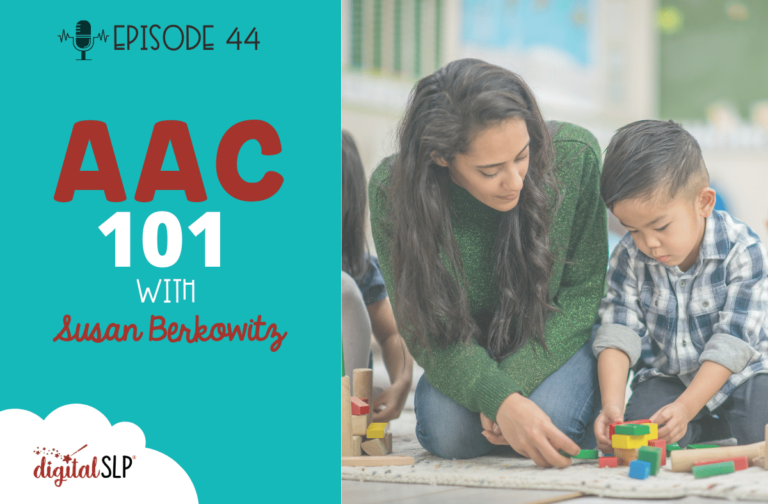



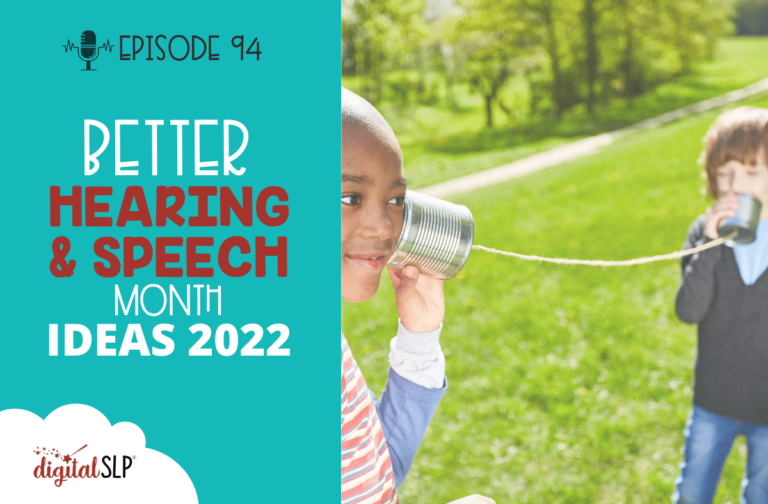
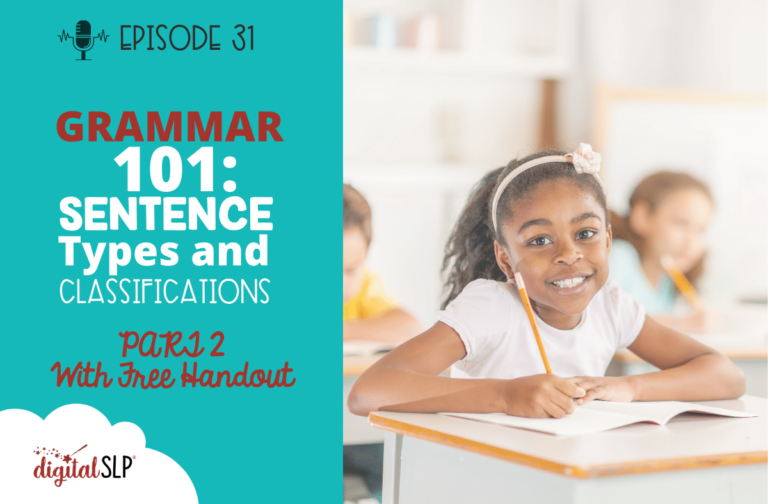
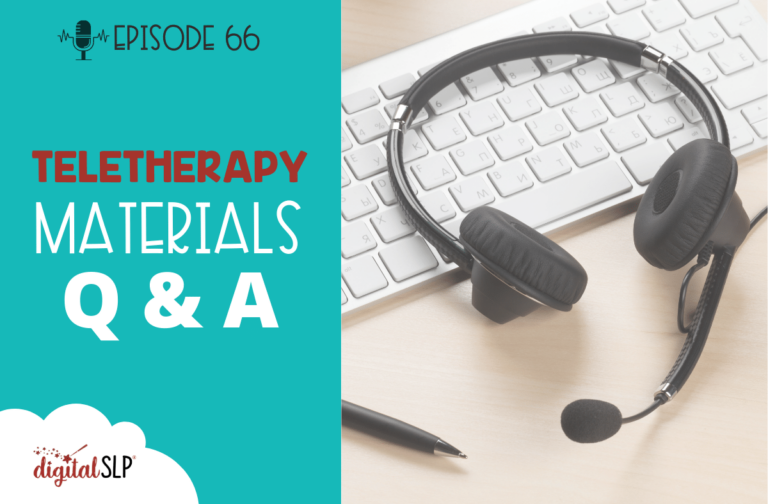
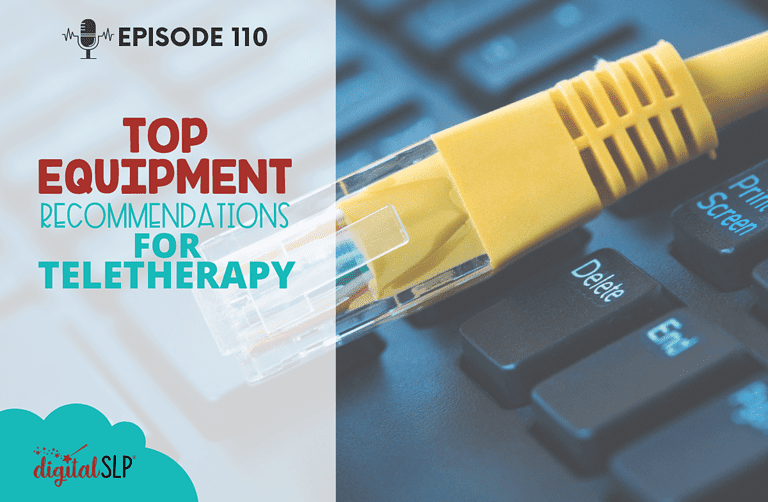
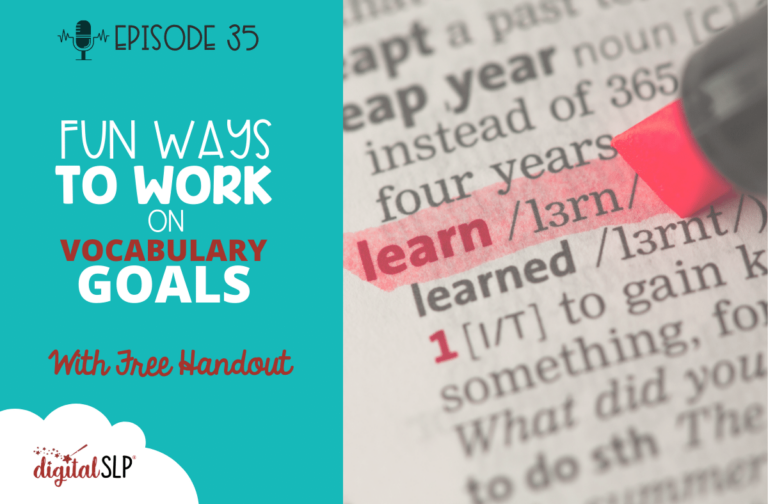
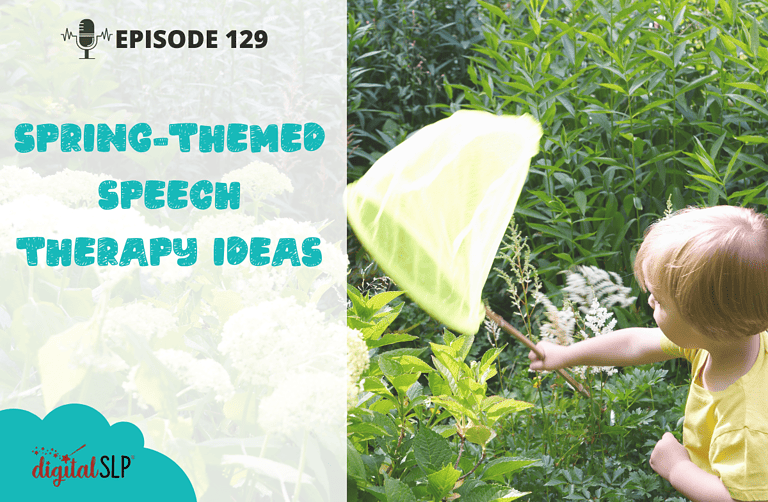

Recent Comments